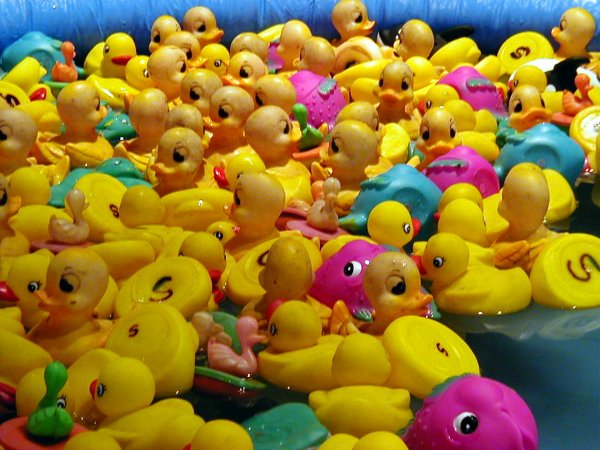
Who ever said rubber duckies couldn’t be useful? A U.S. rocket scientist has decided to use them in order to find out why glaciers speed up in the summer in their “march to sea.” Scientist Alberto Behar of NASA’s Jet Propulsion Lab in California currently creates robotic rovers. He and other scientists hope this experiment will help figure out what’s been going on inside “the fastest-moving Greenland glacier.” (Deborah Zabarenko, Reuters)
Behar and a small team have placed 90 rubber ducks inside the glacier, relying on someone finding them if they emerge in Baffin Bay. The Jakobshavn Glacier is thought to have been the source of the iceberg that sank the Titanic back in 1912. Researchers have been focusing on it because it discharges almost 7 percent of all ice coming off Greenland. And as global warming occurs, its “melting ice sheet” could make oceans rise at a massive rate this century.
“It’s a beautiful place to visit,’ Behar said. “You can watch these icebergs continuously march across and fall into the ocean.” But what he can’t see is “how melting water moves through the ice.” Behar added that it’s understood now what causes the glaciers to surge during the summer season. Some believe the summer sun melts ice on the top glacial surface, creating pools of water. These pools carry water all the way to the underside of the glacier, where it “acts as a lubricant to speed up the movement of the ice toward the coast.” (Reuters) But since it can’t be seen, scientists are clueless as to what actually occurs.
This is where the rubber ducks come in, along with a probe loaded with a GPS device and instruments that can decipher the glacier’s interior. Back in August, Behar flew over a place on the glacier by helicopter and his team lowered the probe into one of its pools by rope. At this time they also placed the rubber duck figures, labeled with the words “science experiment” and “reward” in three different languages, along with a contact email address.
If and when they are found, scientists will know where the ducks ended up. The probe could supply further information by gauging specific pressure and temperature changes, including the direction of the glaciers migration thanks to that handy GPS. But so far, scientists haven’t heard from anyone. Behar admits it could take some time until anyone finds what they planted since the land out there is so remote.
Read More Articles At WeEarth.com





No comments:
Post a Comment